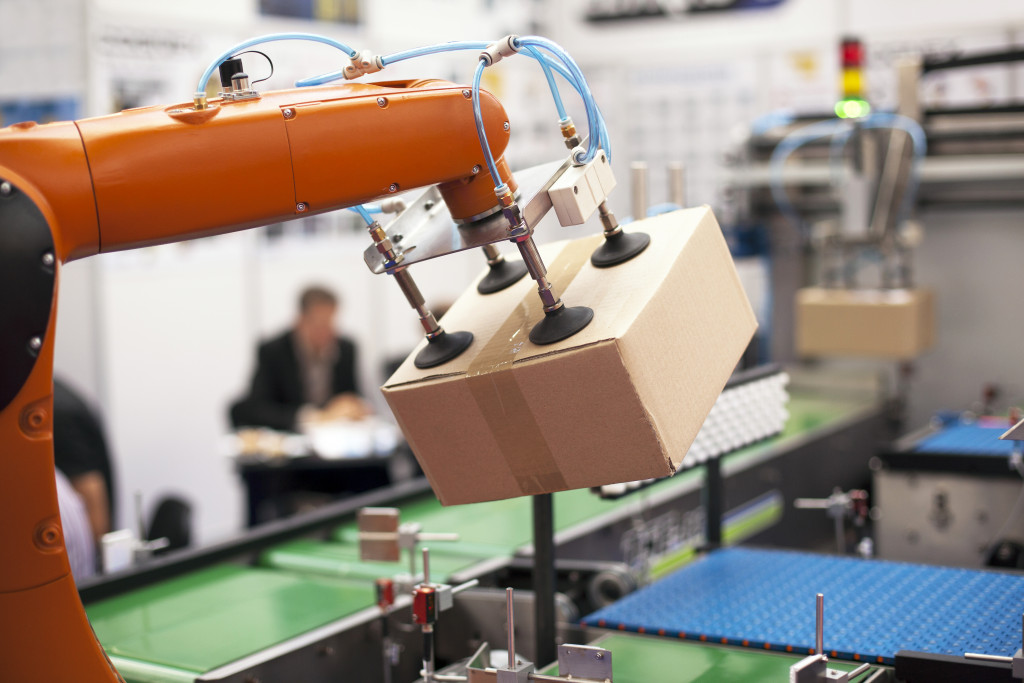Many small businesses are interested in automating their production process but don’t know where to start. This guide will provide a basic overview of automated production, the benefits of automating your production line, and the basic building blocks you’ll need to get started.
What is Automated Production?
Automated production is the use of technology to automate the steps in a manufacturing process. This can include everything from using robots to assemble products to using sensors, motion motors, and software to control the flow of materials. Automated production lines can be used in a variety of industries, from automotive manufacturing to food and beverage production. It is growing bigger, too— at least 31% of all companies have fully automated at least one function.
Benefits of Automating Your Production Line
There are many benefits of automating your production line, including:
- Increased Efficiency: Automated production lines can work faster and more accurately than human workers, which leads to increased efficiency and productivity.
- Reduced Costs: When done correctly, automating your production line can help reduce labor costs, material costs, and waste.
- Improved Quality: Automated production lines can help improve the quality of your products by reducing defects and increasing consistency.
The Building Blocks of an Automated Production Line
To build an automated production line, you’ll need four basic components:
1. Robotics
Robotics technology has come a long way in recent years and is now an essential part of many automated production lines. Robots can be used for tasks like welding, fabricating, painting, and assembling products. When choosing robots for your automated production line, it’s important to consider factors like payload capacity, reach, speed, and precision.
2. Sensors
Sensors are used to monitor conditions on the factory floor and make sure that products are being produced according to specifications. There are many different types of sensors available, so it’s important to choose the right ones for your particular application.
3. Software
Software is used to control the various elements of your automated production line and make sure that they’re working together seamlessly. Some software platforms for mass production automation are PLCnext Control and Siemens S7-1500. PLCnext Control is a software platform that allows you to program, simulate, and operate your automated production line. Siemens S7-1500 is a programmable logic controller (PLC) that can be used to control the flow of materials and machines in an automated production line. There are many different software platforms available, so it’s important to do your research and choose one that will meet your specific needs.
You still have an alternative if you cannot find the best software platform for you. Some companies create custom software for automated mass production. Here are some examples:
- Rockwell Automation
- Schneider Electric
- ABB

4. Motion Motors
Motion motors are used to control the movement of materials and machines in an automated production line. They are an essential part of any automated production line and play a crucial role in ensuring that products are produced accurately and efficiently. There are many different types of motion motors available, so it’s important to choose the right ones for your particular application. Some of the most common types of motion motors include:
Stepper Motors
A stepper motor is a type of motion motor that moves in discrete steps, rather than continuously. Basically, it divides a 360-degree rotation into steps. It uses a series of magnets to control the movement of a shaft. Stepper motors are often used in automated production lines to control the movement of materials and machines. Stepper motors do not require feedback and are usually part of an open loop system.
Servo Motors
Servo motors rotate machine parts efficiently and precisely. They use feedback from a sensor to control the speed and degree of their movement. Another major difference from stepper motors is that they are usually part of a closed loop system.
Linear Motors
Linear motors are used to move materials or products in a straight line. They are often used in applications where traditional motors would not be feasible, such as moving large objects through a confined space.
Motion motors play a crucial role in ensuring that products are produced accurately and efficiently in an automated production line. They provide the precision and accuracy that is necessary for producing high-quality products.
Final Thoughts
Robots, sensors, software, and motion motors are the essential elements of any automated production line. If you’re looking to build an automated production line, it’s important to understand the different types of robots and sensors available and which ones would be best for your particular application. You also need to choose the right software platform and motion motors. There are many different software platforms and motion motors available, so it’s important to do your research and find one that meets your specific needs.




